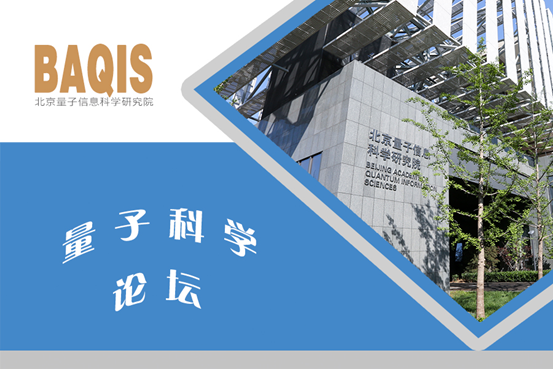BAQIS Quantum Science Forum 144: Electric-field induced nonlinear optics in CMOS silicon nanophotonic waveguides for photonic computing
2024/11/06

Date and Time: 8-Nov-2024 2pm (Beijing time)
Zoom meeting ID:290 755 2745
Speaker:David Heydari, Senior Engineer in Lightmatter company, USA
Host:Quanyong Lu ( BAQIS)
Title: Electric-field induced nonlinear optics in CMOS silicon nanophotonic waveguides for photonic computing
About the Speaker:
David HEYDARI received the BS and MS degrees from Northwestern University (Evanston, IL) in 2016, under the direction of Professor Manijeh RAZEGHI, who leads the Center for Quantum Devices. He received the PhD degree from Stanford University (Stanford, CA) in 2023 under the supervision of Professor Hideo MABUCHI, known for his pioneering work in quantum feedback. He is currently a Senior Engineer in Lightmatter company working on quantum nonlinear optics and photonic computing. He has published more than 30 papers in Optica, Applied Physics Letters, etc.
Abstract:
The microelectronics industry is foundationally built on silicon-based semiconductor devices. Silicon photonics, a relatively nascent yet rapidly emerging field, leverages the maturity of CMOS foundry processes and promises dense integration of optical functionality like that of microelectronic circuits. However, silicon’s inability to produce gain or lase has presented a major barrier to developing fully integrated silicon-based optoelectronic devices. In parallel, nonlinear optics has made substantial advances in expanding the range of accessible frequencies of optical sources, yet as a field has evolved largely independently of silicon-based materials. By combining the principles of nonlinear optics with scalable, high-quality linear optical elements enabled by silicon photonics, such as waveguides, and electronic devices, such as CMOS-based diodes, all on-chip, the latitude of the optoelectronic functionality of silicon can be significantly enhanced. However, nonlinear optical processes such as sum frequency generation and optical parametric amplification, which rely on the second-order susceptibility, are forbidden in silicon, due to its crystalline inversion symmetry. This symmetry can be broken with an applied electric field, a process known as electric field induced second harmonic generation, which is effectively derived from the third-order susceptibility of a material and can be understood as four-wave mixing between two optical electromagnetic fields, one DC field, and a resultant optical field. Moreover, quasi-phase matching allows for efficient power transfer between these fields, which can be implemented in silicon using periodically-poled DC fields generated by reverse-biased PN diodes. In this talk, I will discuss the design and characterization of devices that utilize industry-ready silicon photonics foundry processes to realize nonlinear optics on-chip via second harmonic generation and the first (second-order) optical parametric amplifier on silicon and their applications in photonic computing.
Reference:
1. Degenerate optical parametric amplification in CMOS silicon, Optica, 10,430 (2023).
2. Mid-infrared nonlinear optics in thin-film lithium niobate on sapphire, Optica, 8,921 (2021).
 中文
中文 Email
Email QCloud
QCloud Log in
Log in
